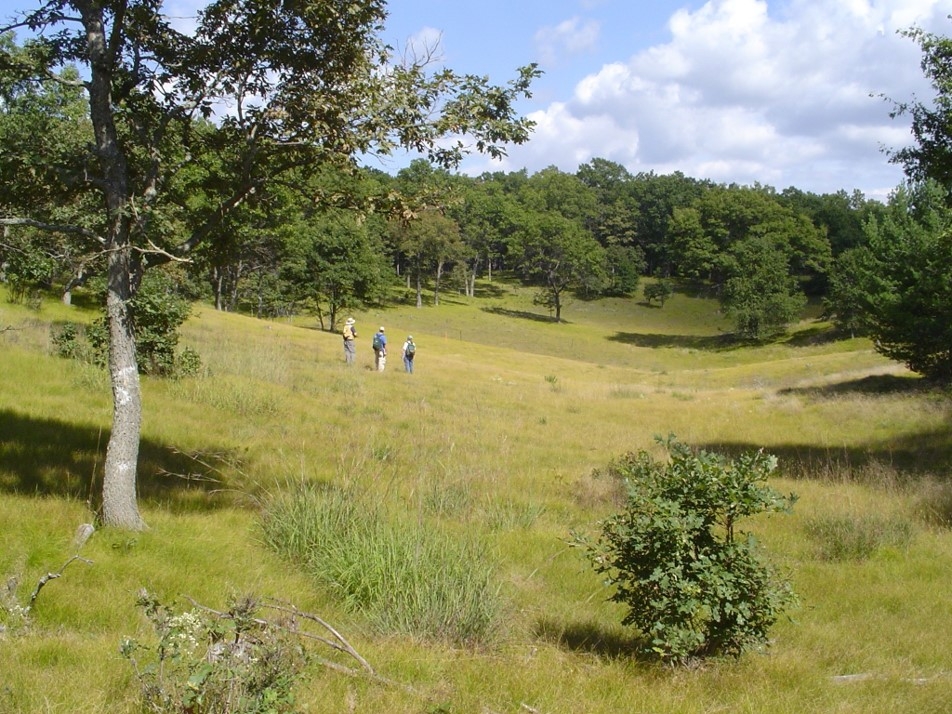Prairie Group

Prairies are diverse, fire-dependent native grassland communities that occur infrequently in the Lower Peninsula but were historically abundant in southern Lower Michigan and infrequent farther north. Prairies occur on glacial outwash plains, pitted outwash plains, lakeplains, coarse-textured end moraines, and glacial till plains on a variety of soils, including sands, loamy sands, sandy loams, loams, and silt loams. Natural processes that influence species composition and community structure include fire, fluctuating water levels, and drought, and for prairies occurring in northern Michigan, growing-season frosts and low-nutrient soils. Prairies are dominated by warm-season grasses and herbs with no or few trees.
Five natural community types fall within the Prairie group including hillside prairie, dry sand prairie, dry-mesic prairie, mesic prairie, and mesic sand prairie. Classification of these Prairie types is based on species composition, differences (often subtle) in soil chemistry, moisture, and composition, hydrology, geographic distribution, and landscape setting.
Citation
Cohen, J.G., M.A. Kost, B.S. Slaughter, D.A. Albert, J.M. Lincoln, A.P. Kortenhoven, C.M. Wilton, H.D. Enander, and K.M. Korroch. 2020. Michigan Natural Community Classification [web application]. Michigan Natural Features Inventory, Michigan State University Extension, Lansing, Michigan. Available https://mnfi.anr.msu.edu/communities/classification. (Accessed: December 29, 2025).

